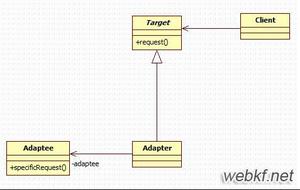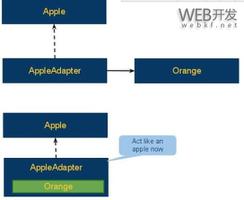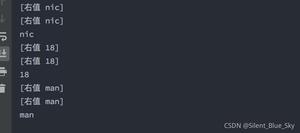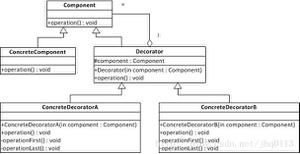行为模式之迭代器

2 迭代器模式
集合(Collection)是编程中常用的一种类型,它们是存储元素的容器。集合有多种类型,如列表(List),集合(Set),栈(Stack),树(Tree)等等,对于使用者来说,需要有一种统一的方式来遍历集合中的元素。除此之外,使用者有时还需要不同的元素遍历方式,如树的深度优先和广度优先遍历。如果一味地往集合中添加遍历方法,会使集合越来越复杂。迭代器模式对此提供了解决方案:提供独立的迭代器对象来提供遍历元素的功能。
迭代器隐藏了集合底层的细节,对外提供了一套统一的元素访问方法。如果需要采用新的算法遍历元素,只需要创建一个新的迭代器对象,而无需修改集合对象。
3 案例
JDK中的Collection很好的应用了迭代器模式。JDK中的Iterator接口:
public interface Iterator<E> { boolean hasNext();
E next();
default void remove() {
throw new UnsupportedOperationException("remove");
}
* [@param](https://my.oschina.net/u/2303379) action The action to be performed for each element
* [@throws](https://my.oschina.net/throws) NullPointerException if the specified action is null
* [@since](https://my.oschina.net/u/266547) 1.8
*/
default void forEachRemaining(Consumer<? super E> action) {
Objects.requireNonNull(action);
while (hasNext())
action.accept(next());
}
}
主要就是两个方法:hasNext()和next()。前者用来判断集合中是否还有剩余元素,后者用来获取下一个元素。
一般的使用模式是:
Iterator iterator = colelction.iterator();while(iterator.hasNext()) {
Object element = iterator.next();
// do something with the element
}
那集合是如何集成Iterator接口的呢?以ArrayList为例:
public class ArrayList<E> extends AbstractList<E> implements List<E>, RandomAccess, Cloneable, java.io.Serializable { // 返回一个迭代器对象,用来遍历List中的元素
public Iterator<E> iterator() {
return new Itr();
}
private class Itr implements Iterator<E> {
// 元素遍历的游标
int cursor; // index of next element to return
int lastRet = -1; // index of last element returned; -1 if no such
int expectedModCount = modCount;
Itr() {}
// 如果游标不等于List长度,说明还有元素未遍历
public boolean hasNext() {
return cursor != size;
}
public E next() {
checkForComodification();
int i = cursor;
if (i >= size)
throw new NoSuchElementException();
Object[] elementData = ArrayList.this.elementData;
if (i >= elementData.length)
throw new ConcurrentModificationException();
// 游标加1,即取到下一个元素
cursor = i + 1;
return (E) elementData[lastRet = i];
}
public void remove() {
if (lastRet < 0)
throw new IllegalStateException();
checkForComodification();
try {
ArrayList.this.remove(lastRet);
cursor = lastRet;
lastRet = -1;
expectedModCount = modCount;
} catch (IndexOutOfBoundsException ex) {
throw new ConcurrentModificationException();
}
}
[@Override](https://my.oschina.net/u/1162528)
@SuppressWarnings("unchecked")
public void forEachRemaining(Consumer<? super E> consumer) {
Objects.requireNonNull(consumer);
final int size = ArrayList.this.size;
int i = cursor;
if (i >= size) {
return;
}
final Object[] elementData = ArrayList.this.elementData;
if (i >= elementData.length) {
throw new ConcurrentModificationException();
}
while (i != size && modCount == expectedModCount) {
consumer.accept((E) elementData[i++]);
}
// update once at end of iteration to reduce heap write traffic
cursor = i;
lastRet = i - 1;
checkForComodification();
}
// fail-fast机制
final void checkForComodification() {
if (modCount != expectedModCount)
throw new ConcurrentModificationException();
}
}
}
很简单的一个实现:每次调用next()方法,获取当前元素,并把游标加1。如果cursor小于列表长度,则说明还没到底;如果cursor等于列表长度,说明元素已经全部遍历完。
可以很容易推测,对于LinkedList的迭代器,是通过链表的方式,逐个访问元素。
再看TreeSet中的迭代器例子:
public class TreeSet<E> extends AbstractSet<E> implements NavigableSet<E>, Cloneable, java.io.Serializable { private transient NavigableMap<E,Object> m;
/**
* Returns an iterator over the elements in this set in ascending order.
*
* @return an iterator over the elements in this set in ascending order
*/
public Iterator<E> iterator() {
return m.navigableKeySet().iterator();
}
/**
* Returns an iterator over the elements in this set in descending order.
*
* @return an iterator over the elements in this set in descending order
* @since 1.6
*/
public Iterator<E> descendingIterator() {
return m.descendingKeySet().iterator();
}
}
对于TreeSet,默认的迭代器方法iterator()是升序的。而调用descendingIterator()方法便可以得到降序的迭代器。如果需要新的元素遍历实现,则只需要新增一个对应的迭代器即可,无需改动TreeSet原先的存储逻辑。
4 总结
迭代器模式提供了集合中元素的统一访问方式,解藕了元素遍历与元素存储,是非常重要的一种设计模式。
文中例子的github地址
以上是 行为模式之迭代器 的全部内容, 来源链接: utcz.com/z/516138.html







